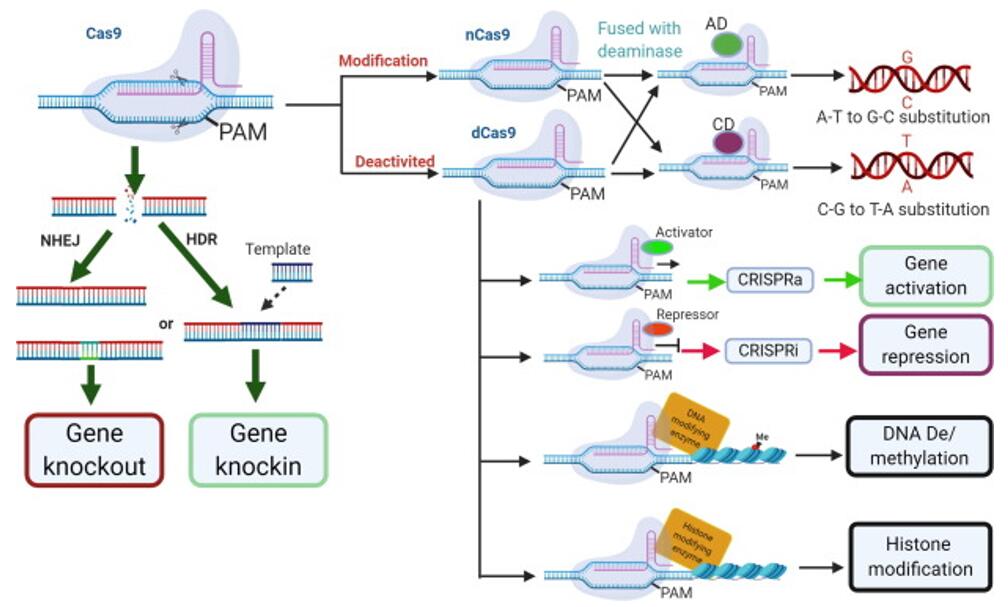
Our promise to you:
Guaranteed product quality, expert customer support.
 24x7 CUSTOMER SERVICE
24x7 CUSTOMER SERVICE
 CONTACT US TO ORDER
CONTACT US TO ORDER
CRISPR Mouse for Gene Function Research 
The mouse is an important model organism for the study of human biology, disease and therapeutics. Recently, sentinel DNA endonucleases have been developed as powerful tools for genome editing in a variety of model organisms. Compared to conventional gene targeting in ES cells, genome editing by fixed-point DNA nucleic acid endonucleases is very efficient and can be performed directly on fertilized eggs, thus avoiding the need for germline receptor embryonic stem cell lines.
The CRISPR/Cas9 system is a powerful and robust biotechnology tool for targeting individual DNA and RNA sequences in the genome. It can be used to target sequences for knock-in, knock-out and replacement, as well as to monitor and regulate gene expression at the genomic and epigenomic levels by combining specific sequences. Gene inactivation by knockout alleles in mice provides valuable insights into the mechanisms of gene function and disease.
 Fig. 1 Application of CRISPR/Cas genome editing in gene functional study. (Zhang D, et al., 2020)
Fig. 1 Application of CRISPR/Cas genome editing in gene functional study. (Zhang D, et al., 2020)
Solution
To study gene function in vivo, our usual strategy is to introduce a gene into a cell or an individual, or to inactivate a gene from a cell or an individual. We identify the function of the gene by observing changes in the biological behavior of the cell or the phenotypic genetic traits of the individual. In short, our 2 strategies are gene loss of function and gene gain of function.
➢ Gene Loss of Function
In mice, gene knockout is one of the most classical and commonly used means of studying gene loss of function. Knockout is a partial sequence of a target gene that is genetically altered in an organism to disable the function of a specific gene, thereby shielding the gene from some or all of its functions, and can further affect the organism and thus presume the biological function of the gene. Our knockout strategies can be divided into systemic knockouts and conditional knockouts.
- Systemic knockouts are generally used to study the effects of target gene or protein function on systemic physiology or pathology.
- Conditional knockout mice are generally used to study embryonic lethality genes, the function of target genes or proteins in specific tissues or cells, and the role played by target genes or proteins at specific times or stages.
➢ Gene Function Acquisition
We introduce target genes into cells or individuals to obtain new or higher levels of expression. We study the function of the gene through changes in the biological traits of the cell or individual.
- Random transgenesis is generally used to study the effects of target gene overexpression on physiopathology.
- Gene targeted overexpression can be used for gene function, protein function overexpression studies, and Rescue experiments for KO phenotypes
- Gene knock-in can be used to simulate human genetic disease models.
Related Services
- Conditional Knockout Mouse
- Conventional Knockout Mouse
- Point Mutation Mouse
- CRISPR/Cas9 Knockin Mouse
- Rosa26 Knockin Mouse
Related Products
Reference:
- Zhang D, et al. CRISPR/Cas: A powerful tool for gene function study and crop improvement. J Adv Res. 2020, 29:207-221.